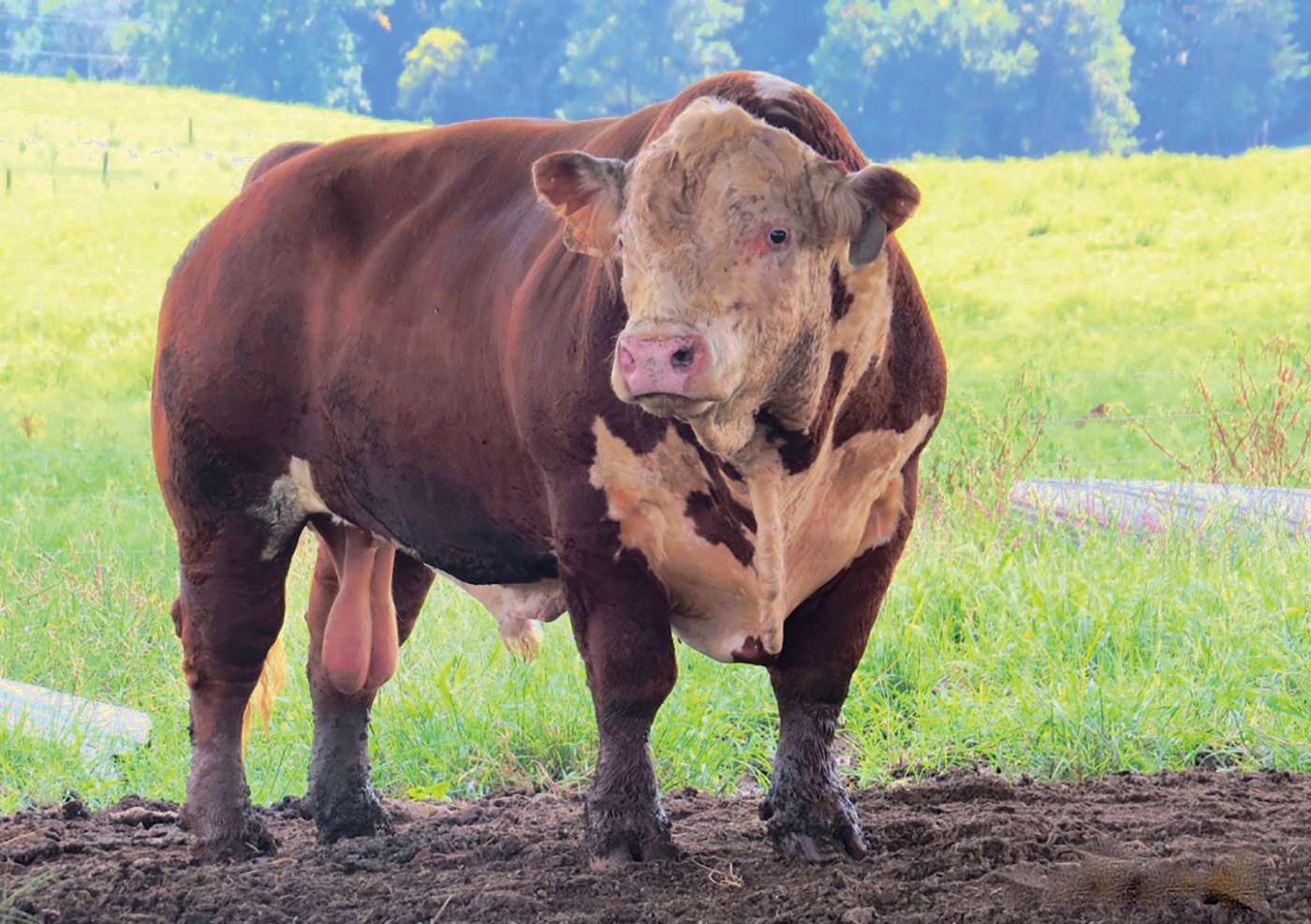help for the overheated bull
Peter Kent
In summer, a stealthy fungus can sideline the sire.

Image courtesy of Clemson University.
Bulls and men seeking to be fathers are susceptible to the same stress. Heat down under may affect the outcome. Bulls can’t swap briefs for boxers, but they should stop grazing on grass infected with a fungus that alters their body chemistry, triggering abnormal body temperatures and other symptoms. Clemson researchers are searching for ways to neutralize the toxic effects.
Tall fescue is a robust perennial, providing millions of acres of pasture for livestock. Its hardiness in part comes from its relationship with a fungus. It thrives on popular varieties of the grass and in return helps the fescue resist insects, heat, and drought. But what is good for the grass is bad for the grazer.
An endophyte, the fungus causes fescue toxicity, a condition that diminishes growth, health, and reproduction in cattle, horses, and sheep. About 8.5 million head of cattle graze on it. Infected fescue may lead to losses of as much as $1 billion yearly in lost body weight, illness, and fewer pregnancies, according to beef industry estimates. Symptoms typically occur during the “summer slump” as cattlemen call it.
Much of the research on fescue toxicity has focused on females, which can fail to become pregnant or spontaneously abort their offspring. The failure rate for cows can run as high as 35 percent. But one bull can have more impact on the problem than one cow. A bull can cover as many as twenty-five cows via natural reproduction.
Molecules and markers
At Clemson, Scott L. Pratt looks at the bulls from another angle. A molecular reproduction physiologist, Pratt focuses on the chemical molecules that deal with animals’ reactions to the toxin. The consumed infected grass and summer heat hamper the bulls’ ability to maintain normal body temperatures. Particularly heat sensitive are the testicles, where body temperature can affect sperm.
Pratt is working on finding genes and gene pathways that are affected by the toxin.
“The work we are doing to identify biochemical markers that are indicators of bull fertility may help with inconsistent breeding soundness exams, which is a big problem,” Pratt says. “All labs have seen mild to no effects on the exams. Bulls on toxic tall fescue will pass a breeding soundness exam, but still be subfertile.”
Currently, cattle producers must take their animals off infected pastures months before breeding. There are nontoxic fescues available, but planting them requires completely replacing a pasture, which can be costly and time consuming. Pratt’s work could lead to better management strategies for bulls grazing on tall fescue.
Scott L. Pratt is an associate professor of animal and veterinary sciences, College of Agriculture, Forestry, and Life Sciences. Peter Kent is a news editor and writer in Clemson’s Public Affairs Activities.


